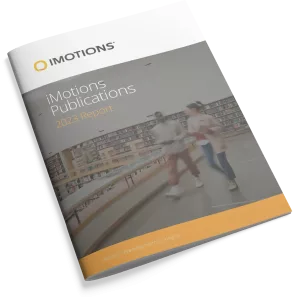-
Mental workload assessment by monitoring brain, heart, and eye with six biomedical modalities during six cognitive tasks
Introduction: The efficiency and safety of complex high precision human-machine systems such as in aerospace and robotic surgery are closely related to the cognitive readiness, ability to manage workload, and situational awareness of their operators. Accurate assessment of mental workload could help in preventing operator error and allow for pertinent intervention by predicting performance declines that […] -
Unlocking Human-Robot Dynamics: Introducing SenseCobot, a Novel Multimodal Dataset on Industry 4.0
In the era of Industry 4.0, the importance of human-robot collaboration (HRC) in the advancement of modern manufacturing and automation is paramount. Understanding the intricate physiological responses of the operator when they interact with a cobot is essential, especially during programming tasks. To this aim, wearable sensors have become vital for real-time monitoring of worker […] -
Fixation-related potentials during mobile map assisted navigation in the real world: The effect of landmark visualization style
An often-proposed enhancement for mobile maps to aid assisted navigation is the presentation of landmark information, yet understanding of the manner in which they should be displayed is limited. In this study, we investigated whether the visualization of landmarks as 3D map symbols with either an abstract or realistic style influenced the subsequent processing of […] -
Joy is reciprocally transmitted between teachers and students: Evidence on facial mimicry in the classroom
Background: The critical importance of positive emotions for classroom functioning is well established and teachers’ and learners’ trait-based joy during class has been shown to covary. This has been interpreted as evidence of emotional contagion across teachers and learners. However, no research to date seems to have explored in-situ processes of emotional contagion, thus the […] -
INVESTIGATING THE ROLE OF COGNITIVE FLEXIBILITY IN SHAPING TEACHER ENGAGEMENT IN A SIMULATED VIRTUAL CLASSROOM
The teaching process involves complex, multifaceted relationships. For this reason, teachers’ engagement in teaching can be shaped by factors such as the teacher’s goals, the conditions of the teaching environment, and the teacher’s cognitive characteristics. Determining the impact of these cognitive, subjective, and environmental conditions on teacher engagement, which reflects teachers’ performance, can provide useful […] -
Tracing emotional responses to nature-based tourism commercials and tagging individual sequences
Most tourism campaigns rely heavily on emotional appeals. Therefore, it is crucial to understand which video sequences elicit certain emotions to determine whether they are consistent with the targeted marketing objectives. In this study, we employ facial expression analysis to trace the emotional responses of participants watching a tourism destination commercial. Since previous studies did […] -
More Than One Way: Fifth-Graders’ Varied Digital Reading Behaviors and Comprehension Outcomes
Digital reading is ubiquitous, yet understanding digital reading processes and links to comprehension remains underdeveloped. Guided by new literacies and active reading theories, this study explored the reading behaviors and comprehension of thirteen fifth graders who read static digital texts. We coded for the quantity and quality of digital reading behaviors and employed action path […] -
UX assessment strategy to identify potential stressful conditions for workers
The European Commission defined the new concept of Industry 5.0 meaning a more human-centric, resilient, and sustainable approach for the design of industrial systems and operations. A deep understanding of the work environment and organization is important to start analysing the working conditions and the resulting User eXperience (UX) of the operators. Also, the knowledge […] -
Evaluation of Cyclist Galvanic Skin Response and Visual Attention in Commercial Vehicle Loading Zones
With growing freight operations throughout the world, there is a push for transportation systems to accommodate trucks during loading and unloading operations. Currently, many urban locations do not provide loading and unloading zones, which results in trucks parking in places that obstruct bicyclist’s roadway infrastructure (e.g., bicycle lanes). To understand the implications of these truck […] -
A Comparative Study of Real and Virtual Environment via Psychological and Physiological Responses
Currently, immersive virtual environments (IVE) are widely used in fields such as architecture and environmental psychology. These simulated environments allow for a detailed evaluation of how different designs impact users’ perception and interaction with the built environment, under controlled conditions and without incurring high costs. The validity of these IVEs is related to their capacity […]
Research Report 2024
In-depth look at the scientific landscape as powered by iMotions software, showcasing groundbreaking research and the impact of our tools in various scientific and industrial fields.

iMotions Science Resources
Looking for white papers, validation reports or research show casing iMotions Multimodal capabilities?
Share Your Research

850+ universities worldwide with an iMotions human behavior lab
73 of the top 100 highest ranked universities
710+ published research papers using iMotions
iMotions is used for some of the most interesting human behavior research studies carried out by top researchers around the world. Contact us to have your publication featured here.
The authors of these publications have used iMotions as a software tool within their research.
“Software should be cited on the same basis as any other research product such as a paper or a book; that is, authors should cite the appropriate set of software products just as they cite the appropriate set of papers” (Katz et al., 2020).
We therefore encourage you to cite the use of iMotions where appropriate.
How to cite iMotions
APA
iMotions (10), iMotions A/S, Copenhagen, Denmark, (2024).
Note: adjust the version and year where relevant.
5 Most Popular Blogs
Publications
Read publications made possible with iMotions
Blog
Get inspired and learn more from our expert content writers
Newsletter
A monthly close up of latest product and research news


